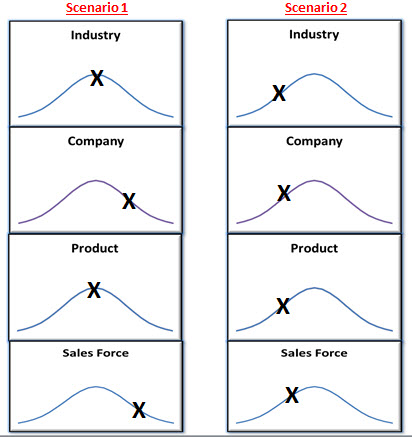How Success Traps Great Sales Leaders
How Success Traps Great Sales Leaders:
 Success is a trap. Your past success as a Sales VP is holding you back. Why? Because the moment you see a sales problem you say: “What have I done before?”
Success is a trap. Your past success as a Sales VP is holding you back. Why? Because the moment you see a sales problem you say: “What have I done before?”This is a natural human tendency. We are creatures of habit. I have attached a case study and solution guide to help you. You will see a company's attempt at solving a sales problem using an old solution. It reveals how a sales leader can avoid this mistake and the associated pain.
The solution guide covers four problems that has sales leaders defaulting to their past. The hardest thing for any leader to do is look forward. They solve a problem of the present with a solution from the past. They use a version of a known solution instead of the right solution.
Success Traps
You have been promoted multiple times because you made the number. In doing so, you had a set of performance conditions in the sales force.- You had a balanced quota and compensation plan.
- You had some version of a sales process and it worked.
- You had an optimal sales structure that helped you determine direct vs. indirect coverage models.
Good in Disguise
The tough part is success doesn’t typically drive us to change. Perhaps you were making the number because you had a great product. Maybe it was the competitors’ weak offer. It could have been great reps that were fantastic at hunting new logos. Maybe you were in the right market. High tides raise all ships.You must balance leveraging past success with new best practices solving sales problems. You have earned your position and promotions. Don't let your success trap you because you keep looking back.Breaking Free from your Success Trap
Consider this alternative approach. A successful sales leader should leverage past experience. The trick is knowing how to leverage your past for maximum benefit.Understand where your industry, product, company and sales force are at a moment in time. A typical bell curve illustrates growth, maturity or decline. The visual below gives two examples.
Scenario 1—The industry is mature, the company is in decline. They sell a mature product and have slow moving veteran sales force.
Scenario 2—You see a completely different set of circumstances. Industry, company, product and sales force on the rise.
Both companies are debating rolling out a new sales process. Imagine how each sales leader may take his previous bias in solving this problem? The solution for each should be completely different based on these conditions. Each sales leader needs a completely different sales process. And chances are, the sales process from his old company is not the answer. The context of these four elements will help the sales leader avoid his past as a crutch.

Executing what you have in the past will only yield similar success if the conditions are identical. They never are. The moment you rinse and repeat, you are holding yourself back.
Tomorrow’s Solution Guide
The challenge you face knows how to look forward. Below is an example from the solution guide. This was used to help sales leaders solve a forecast issue. Big deals were getting pushed into the next quarter. The number was getting missed. Yesterday’s Solution shows what the successful sales leader may have done in his past. Today’s Alternatives shows the contrast. The key is recognizing when you have yesterday’s solution.
To see the complete case study and solution guide click here
Are You Ready?
Think about the last sales problem you solved. Where did you find the solution? The majority of you will say your previous company. Your past success may work you right out of your job. Three keys to prevent you from solving today’s problem with the wrong solution from your past:- No two sales problems are identical. Each deserves a thorough review framing the problem. Use the lifecycle diagram above and this guide to help you.
- Free yourself of the term “what I did when I worked at ABC Company”. Instead, focus on the question “what are all of our potential solutions”? Create an inventory of possibilities that will help you for the future.
- Spend 75% of your energy on implementation of the solution and 25% on design. Most sales leaders have this energy/effort allocation flipped. The heavy lift is always execution.
Author: Matt Sharrers
Follow @MattSharrers
Follow @MakingTheNumber
If you enjoyed this post, never miss one again by subscribing your Email Here and/or subscribing to the RSS Here.



No comments:
Post a Comment